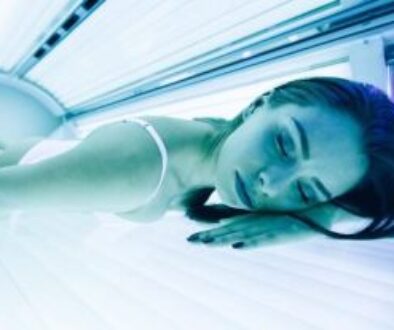Using Tanning Bed Lotions To Prevent Skin Damage
Getting out and enjoying the sun is something that most people enjoy doing, especially after a long, dark winter. People will travel to have fun in the sun. There are times when going out in the sun is not possible, though. It could be because of the weather, or maybe it’s because you burn too easily and need to use indoor tanning beds before going out in the sun. Even indoor tanning can be hard on your skin, but using tanning bed lotion can help prevent skin damage.
Help prevent aging skin
Photo aging is the premature aging of the skin that is caused by repeat exposure to ultraviolet radiation (UV). Photo aging is different than chronological aging. Tanning beds can give a base tan which may prevent sun burns when suntanning outdoors. The sun burn and peeling can age your skin faster with photo aging. When using a tanning bed lotion, it is important that it has vitamins and moisturizers in it. A proper lotion designed for tanning beds will open your pours and enhance the UV rays of the bed to provide you with a deeper tan without drying your skin out. These lotions are made to be used for short but intense tanning sessions. Using a tanning lotion, sunless tanner, or spay is another way to begin your tanning season that will help prevent skin aging.
Using tanning bed lotion everywhere, yes everywhere
Sun tanning is an all over body experience, and tanning indoors is no different. The tanning beds are designed to give an all over body tan, and this means that you need to protect everywhere on your body that is subjected to the light. There are specific lotions that are used for lips and other delicate parts of your body. Forgetting to use lotion on the lips can make them dry and cause them to crack. Facial skin is also thinner than other parts of the body, and it can burn easier than other parts of the body, too, contributing to photo aging. Using the right tanning bed lotion for your face can help prevent the burn and the damage. Tanning in the nude is an option in some places, and if this is your choice, be sure to take precautions. Lotion needs to be applied in all sensitive areas to prevent skin damage. Remember that some areas of your body are covered by clothes while outside, so when tanning, they will be much more susceptible to burning and damage. Using the proper lotions for those areas while following the salon instructions will be a skin saver.
I already have signs of aging; what tanning bed lotion should I use?
As we age, our skin does begin to change, and we show signs of aging with wrinkles and blemishes. This does not mean that we cannot tan; however, choosing the right indoor tanning lotion becomes even more essential. A good tanning lotion for aging skin should have some extra ingredients. Anti-aging lotion should contain a firmer product in it. This, combined with the moisturizer, will decrease the wrinkles and plump up the skin, allowing your new tan to shine beautifully. Anti-aging tanning bed lotions can also have fruit extract, essential oils, and antioxidants. A combination of these will help rejuvenate your skin, making it look healthier and younger.
Follow basic steps for the best tanning results.
The first thing is to prepare for using the tanning bed. Just showing up and getting into the bed will not get the best results and may actually do more damage to your skin. Preparations should begin at home before going to the salon. Ensure that, if you are on any medications, there are no photosensitivity warnings. The day prior to going to the salon, exfoliate your body to ensure all the pores are clean and open. Then use a light, oil-free moisturizer to ensure that your skin is healthy and ready to tan. When at the salon, ensure that you chose the right indoor tanning lotion for your skin. Using tanning bed lotion will help prevent damage to your skin, so do not tan without it. Remove all makeup to prevent any reaction to the tanning session, and do not use essential oils prior to tanning. Always follow the procedures set out by the salon to ensure you are safe and without the risk of overexposure.


